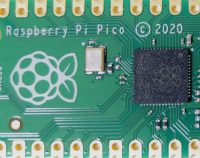In the last article, I used Micro Python to control the LEDs on a Raspberry Pi Pico board. Now that we know how to set up the development environment, write the software and program it to the board, we’ll try to use the Raspberry Pi Pico’s various peripherals via the I/O pins on the external header. LED lighting controll and detection of tact switch First, as an example of GPIO control, let’s try to control LED lighting (GPIO output) and detect ON/OFF of an external switch (GPIO input). We will also try to use interrupts to detect the GPIO input. Hardware Connection Below is the wiring for the Raspberry Pi Pico’s I/O terminals, LEDs, and tact switch. The header pins on the board have 26 of the 30 GPIO pins (GP0-GP28) of the RP2040 IC, so you can use any of the pins for the same control. Schematics Connection Software
Read more